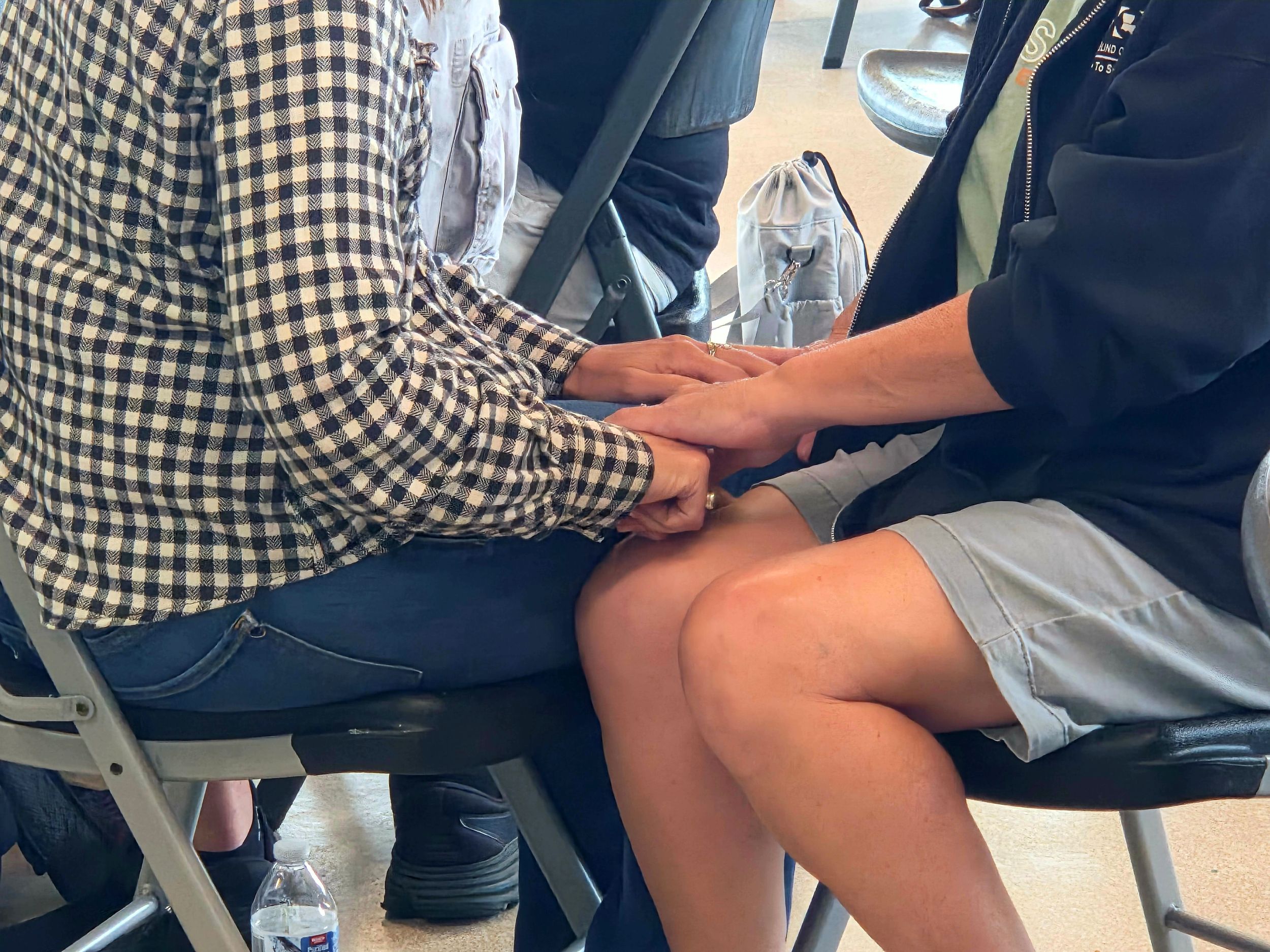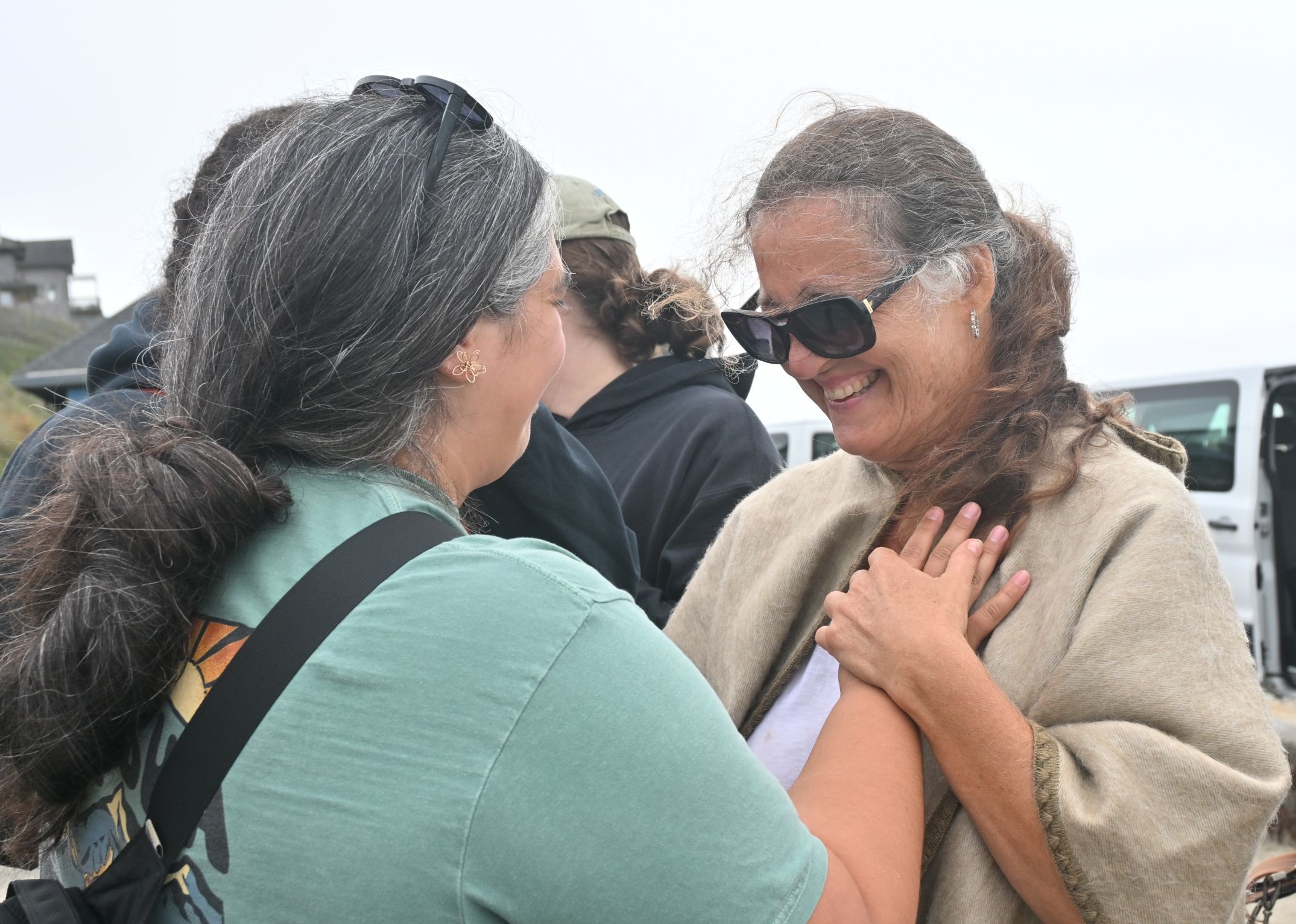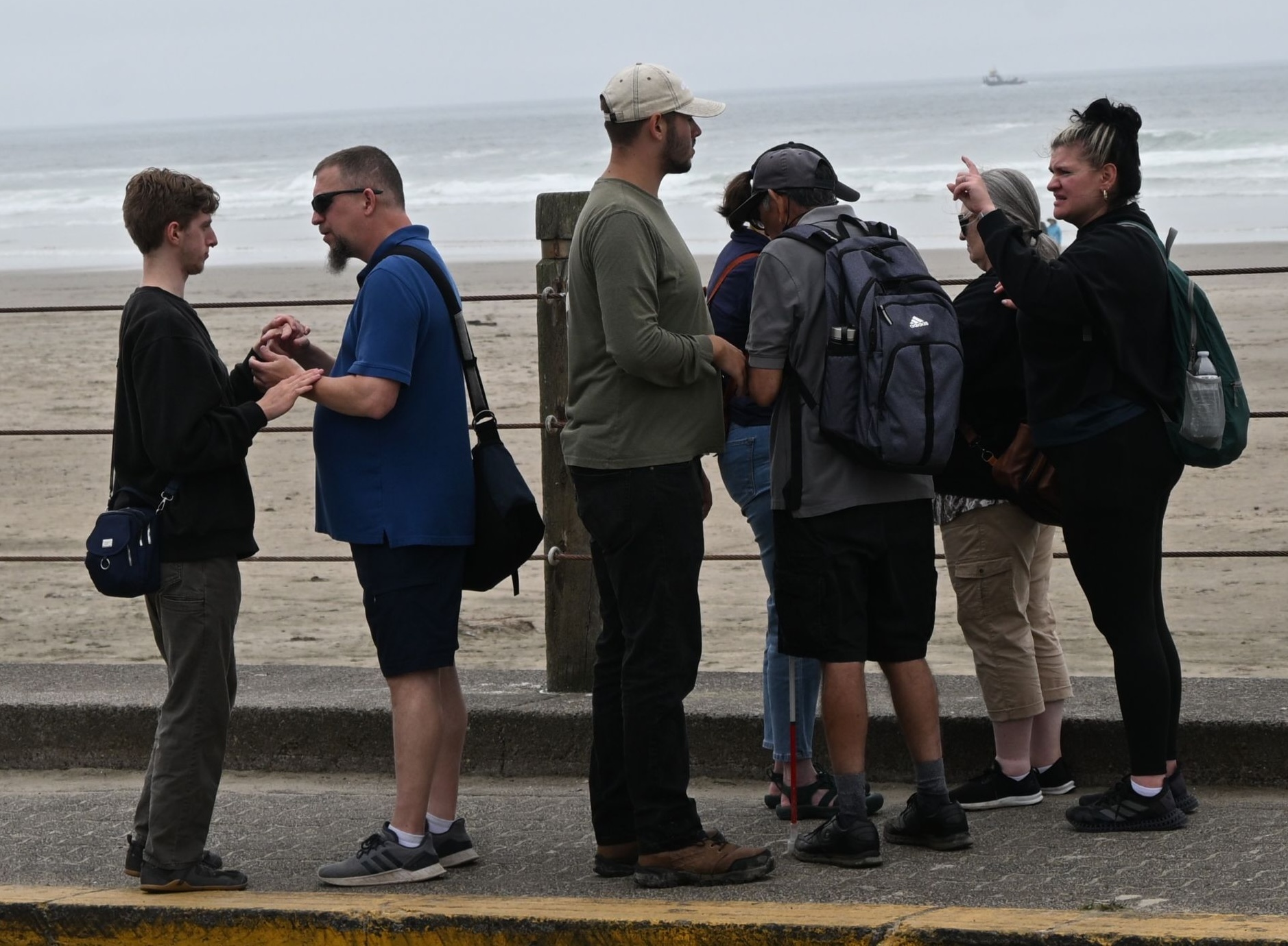
By SHAYLA ESCUDERO/Lincoln Chronicle
NEWPORT – Inside Newport’s Visual Arts Center, a group of 30 people sit with their chairs facing one another, knees together, hands together and tracing over each other’s palms, chest, legs and back. The room is mostly silent, but nearly everyone is in conversation.
All are using an emerging language – a method of communication solely based on touch.
When Jason “Jaz” Herbers’ vision began to change, it took the joy out of American Sign Language. All the facial expressions and signs he learned and loved as a Deaf person fell flat as a DeafBlind person.
Historically, DeafBlind people have been limited to using interpreters or used sign language that left gaps in communication. But Protactile, an emerging language that only took shape over the last 20 years, changed how Herbers and other DeafBlind people communicate.
“It gives us more information and we are in direct communication,” Herbers, a DeafBlind teacher from Ohio said. “It gives us autonomy.”
What began in the Pacific Northwest, has now spread all over the United States.
Approximately 25 interpreters and 20 DeafBlind mentors flew to Oregon the past two weeks from all over the United States to attend training sessions as part of a Western Oregon University grant. The training program, which included a stop in Newport, gave interpreters a chance to put their skills into practice.
Connecting

When Lesley Silva-Kopec uses the Protactile expression for beach, her hands trace a rolling wave on the forearm of the person she is speaking with. Then, she places her hands over their upper chest, wiggling her fingers like sunbursts.
That’s one of her favorite expressions, but there are so many she loves. When she first saw a video of people using Protactile, she described the moment as mesmerizing.
When two people are conversing, they use all four arms and physical contact is maintained the whole time. One hand is often used to give feedback, called back channeling, to show you are listening– the equivalent of maintaining eye contact or nodding in the sighted world.
For Silva-Kopec, a DeafBlind educator from New York, it’s difficult to describe the differences between American Sign Language and Protactile because it’s a difference you feel – it’s visceral and transcends words.
“I’m able to reciprocate emotion, to connect more,” she said, “I can feel how others feel when they touch me.”
Silva-Kopec uses Protactile with her husband, who is also DeafBlind, and feels that she is able to connect on a deeper level with him because of it. But she doesn’t just feel more connected to other DeafBlind people, she feels more connected to herself.
“I feel like sometimes touch is a universal way to connect with people,” Silva-Kopec said.

Emerging language
Facing the ocean on Tuesday, interpreters and DeafBlind educators clustered in groups, hands placed on Jelica Nuccio’s soft beige shawl, eager to greet the woman who helped create the language they cherish.
In 2007, when Nuccio served as the first DeafBlind director of the DeafBlind Service Center in Seattle, she began to advocate for DeafBlind people to communicate with each other without the use of interpreters. They established a space where all communication that happened would be by touch and started training DeafBlind people to use it.
“That’s when the concept of touch was introduced but it hadn’t become a language yet,” she said. “That happened through years of community coming together.”
Nuccio didn’t set out to create a language, but it happened anyway.
“I didn’t expect it, it was shocking to know that through data collection and research we found out a language was developing.”
Protactile changed with time and American Sign Language signs were replaced with tactile signs. Now, linguists argue Protactile is its own language, with grammatical structures and expressions separate from American Sign Language.
For some DeafBlind people, Protactile felt like a missing piece had finally fallen into place.
“I had grown up in the deaf community but I felt lost, like something was missing,” said Rhonda Voight-Campbell, a DeafBlind educator from New York. “When I learned Protactile I finally felt connected to the DeafBlind community.”
Now living in Monmouth, Nuccio runs Tactile Communications, which builds curriculum and trains people in Protactile. Several of the DeafBlind educators learned or now work for Nuccio’s organization.
Recently, people came all the way from France to learn, Nuccio said. They spoke French Sign Language which was a bit of a barrier but found common ground. And now they will bring back what they had learned to their DeafBlind community in France, she said.
With time, she believes Protactile will spread even more outside the United States.

Visiting Newport to train
In 2021, Western Oregon University was awarded a five-year federal grant through the U.S. Department of Education to train sign language interpreters working with DeafBlind individuals who use the new language.The grant is based on the Rehabilitation Acts of 1973 and 1974, a landmark law that prohibits disability discrimination in programs conducted by federal agencies.

The grant was in part awarded in recognition that DeafBlind people are underemployed and the lack of interpreters is a barrier, said CM Hall. She is the co-director of WOU’s Protactile Language Interpreting National Education program and a Newport city councilor.
DeafBlind educators from all over the United States come to the university to train interpreters, and stopping in Newport allows them a chance to apply what they learn.
“Newport is full of tactile sensations, you can feel the ocean, smell the taffy on the Bayfront, it really perks up the senses,” Hall said.
Newport also has a lot of tactile art. At Nye Beach, their hands followed the markings of relief wood sculpted faces. Along the Bayfront, their hands slid over the ridges of the tire sculptures of the animals in front of Ripley’s Believe it Or Not.
Interpreters put their skills to use from interpreting presentations by Newport City Manager Nina Vetter to interactions along Bayfront stores.
The grant is in its fourth year and has one more year left of funding. But, with the Trump Administration’s pullback of federal grants, there is uncertainty in the air.
“It’s the last day of possibly the last year of the training program,” Herbers said.
It’s a cause for contemplation. As a DeafBlind educator, Herbers worries about DeafBlind people losing their autonomy if they do not access the language and if interpreters aren’t learning directly from DeafBlind people.
He also believes that the sighted world has a lot of work to break down the stigma of touch. DeafBlind people would be cut off from the world without touch – it is how Herbers gets his information. But sighted people may not be used to this type of communication.
“I think that for many people touch is still very taboo,” Herbers said. “ I just want people to be open minded.”
- Shayla Escudero covers Lincoln County government, education, Newport, housing and social services for Lincoln Chronicle and can be reached at Shayla@LincolnChronicle.org




















